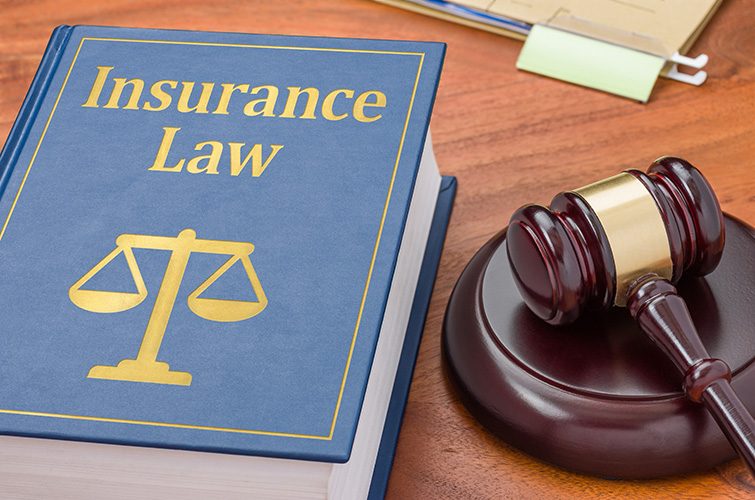Mutual Waiver of Subrogation in Prime Contract May Not Protect the Subcontractor
Ensure your construction attorney examines the contract and researches how courts in the project’s jurisdiction interpret subrogation waivers.

I have always said practicing insurance law takes a “special” kind of lawyer. Aside from the excitement inherent in studying exclusions to exclusions, a good insurance lawyer understands arcane language and realizes that courts across the country interpret this language differently.
The art of negotiating this minefield is what makes an insurance lawyer especially valuable to those who practice construction law. One common landmine in construction contracts is the so-called “waiver of subrogation.” This month, we delve into the waiver of subrogation, its role in construction contracts, and how it affects the subcontractor.
By sheer coincidence, one of my subcontractor clients recently had a waiver of subrogation issue. Only a few weeks later, I learned that an appeals court in Maryland recently decided a case on the very same issue. Taking this coincidence as an omen, I figured that the waiver of subrogation must be the topic for this month’s column.
Waiver of Subrogation Defined
The online publication “Practical Law” offers an excellent definition and background explanation of a contractual waiver of subrogation:
“A waiver of subrogation is a contract clause that prevents an insurer from suing the third party that caused the insured’s loss. Many commercial contracting parties use waivers of subrogation to allocate risk. An insured’s valid contractual waiver of subrogation binds the insurer. … Often, the insurer memorializes its consent to its insured entering into contractual waivers of subrogation by adding an endorsement to the insurance policy …”
Let’s use an example to illustrate the concept. Oscar Owner enters into a general contract with Charles Contractor to construct an office building. This general contract includes a mutual waiver of subrogation clause, meaning that if Owner suffers a loss due to the conduct of Contractor, and Owner’s insurer compensates Owner, then Owner’s insurer cannot sue and recover from Contractor or its insurance carrier (to make Owner’s insurer “whole”).
Conversely, suppose Contractor suffers a loss due to Owner’s conduct, and Contractor’s insurer compensates Contractor. In that case, Contractor’s insurer cannot sue and recover from Owner or its insurance carrier.
“Practical Law” cautions that “[p]arties to commercial contracts should not enter into waivers of subrogation without consulting their insurer.” Suppose an insured waives its insurer’s right to subrogation without obtaining its permission. In that case, the insured may suffer severe consequences, including a denial of coverage or a clause that courts refuse to enforce.
Contracting parties typically include waivers of subrogation in their contracts, and they effectuate them through their insurance carriers by having the appropriate endorsement issue. Parties with waivers of subrogation face higher premiums, but the benefits of such waivers are clear.
“Practical Law” notes that “[c]ontracting parties use waivers of subrogation to apportion risk. By waiving subrogation rights they have against one another, contracting parties . . . [m]inimize the risk of bringing claims against one another . . . [and] agree to let the risk of loss lie with the parties’ insurers.”
As discussed above, assume the general contract has a mutual waiver of subrogation (between Owner and Contractor). Add to the mix Sally Subcontractor and her subcontract with Contractor. Assume this subcontract also has a mutual waiver of subrogation (between Contractor and Subcontractor).
What happens if Owner sustains a loss, Owner’s insurer pays it and then Owner’s insurer exercises its subrogation rights by suing a negligent Subcontractor directly for damages? Does the mutual waiver of subrogation provision in the general contract protect Subcontractor? One may find the answers to these questions in the recent case of XL Insurance America, Inc. v. Lithko Contracting, LLC, No. 0316, 2023 WL 6784245 (Md App. Oct. 13, 2023).
The XL Insurance Case
This case involved the construction of an Amazon warehouse in Baltimore, Md. XL Insurance America, Inc. (XL), Amazon’s carrier, paid out on a claim for damage to the warehouse. After that, XL, as Amazon’s subrogee, sued the subcontractors who built the warehouse, claiming that the subcontractors’ negligence was the cause of the damage.
Finding the subcontractors were third-party beneficiaries of the general contract between Amazon and Duke Baltimore, LLC (Duke), the prime contractor, the Baltimore City Circuit Court enforced the waiver of subrogation clause in the prime contract. It dismissed XL’s claim against the subcontractors. XL appealed this decision to the Appellate Court of Maryland.
Unfortunately for the subcontractors, the appellate court reversed the circuit court. Applying principles of contract law, the appellate court found that under the plain, unambiguous language of the prime contract, the subcontractors were not intended third-party beneficiaries of the prime contract.
As the appellate court noted, “[A] third party may enforce a contract ‘if the contract was intended for his or her benefit and it clearly appears that the parties intended to recognize him or her as the primary party in interest and as privy to the promise.’” (Citation omitted.)
Here, the appellate court found that the contractual provisions in the prime contract — including but not limited to the waiver of subrogation clause — were not inserted to benefit the subcontractors. Thus, the subcontractors could not rely on the waiver of subrogation in the prime contract for protection. As a result, the subcontractors were subject to suit by XL in the underlying subrogation action.
What are the lessons one may learn from the XL Insurance case? First, a subcontractor’s construction attorney should review the prime contract before his client executes a subcontract. The attorney should take note of the waiver of subrogation clause in the prime contract and see if any of the language in it demonstrates that the subcontractor is an intended (as opposed to incidental) third-party beneficiary of the clause.
Next, the construction attorney should consult with insurance counsel (or do the appropriate legal research themselves) to determine how courts in the jurisdiction where the project is located interpret waivers of subrogation clauses in construction contracts.
This inquiry is essential. Just because the insurance carrier (as subrogee) prevailed in a Maryland court does not mean that the subcontractor cannot win in a jurisdiction with a “less rigid” approach to contract interpretation. See Midwestern Indem. Co. v. Sys. Builders, Inc., 801 N.E.2d 661 (Ind. Ct. App. 2004) (finding subcontractor was a third-party beneficiary of waiver of subrogation provision).
By understanding waivers of subrogation and their effect on the contractor and subcontractor, parties to construction contracts could better allocate their risk and negotiate the contract price accordingly to account for that risk. l
Steven Nudelman is a partner at the law firm of Greenbaum, Rowe, Smith & Davis LLP, where he is chair of the firm’s Construction Contracting & Risk Management Practice Group. He also is a member of the firm’s Real Estate and Litigation Department and its Construction Disputes, Community Association, Alternative Dispute Resolution, and Alternative Energy & Sustainable Development Practice Groups. Nudelman is a Charter Fellow of the Construction Lawyers Society of America. You can reach him at 732-476-2428 or snudelman@greenbaumlaw.com.





